Potřebujeme váš souhlas k využití jednotlivých dat, aby se vám mimo jiné mohly ukazovat informace týkající se vašich zájmů. Souhlas udělíte kliknutím na tlačítko „OK“.
ASTM E2139-05(2011)
Standard Test Method for Same-Different Test
Automaticky přeložený název:
Standardní zkušební metoda pro Same, různých zkušebních
NORMA vydána dne 1.8.2011
Informace o normě:
Označení normy: ASTM E2139-05(2011)
Poznámka: NEPLATNÁ
Datum vydání normy: 1.8.2011
Kód zboží: NS-44441
Počet stran: 13
Přibližná hmotnost: 39 g (0.09 liber)
Země: Americká technická norma
Kategorie: Technické normy ASTM
Kategorie - podobné normy:
Anotace textu normy ASTM E2139-05(2011) :
Keywords:
difference test, minimize carry-over, minimize sensory fatigue, sensory test for difference, two-sample sensory test, ICS Number Code 03.100.50 (Production. Production management)
Doplňující informace
| Significance and Use | ||||||
|
This overall difference test method is used when the test objective is to determine whether a sensory difference exists or does not exist between two samples. It is also known as the simple difference test. The test is appropriate in situations where samples have extreme intensities, give rapid sensory fatigue, have long lingering flavors, or cannot be consumed in large quantities, or a combination thereof. The test is also appropriate for situations where the stimulus sites are limited to two (for example, two hands, each side of the face, two ears). The test provides a measure of the bias where judges perceive two same products to be different. The test has the advantage of being a simple and intuitive task. |
||||||
| 1. Scope | ||||||
|
1.1 This test method describes a procedure for comparing two products. 1.2 This test method does not describe the Thurstonian modeling approach to this test. 1.3 This test method is sometimes referred to as the simple-difference test. 1.4 A same-different test determines whether two products are perceived to be the same or different overall. 1.5 The procedure of the test described in this test method consists of presenting a single pair of samples to each assessor. The presentation of multiple pairs would require different statistical treatment and it is outside of the scope of this test method. 1.6 This test method is not attribute-specific, unlike the directional difference test. 1.7 This test method is not intended to determine the magnitude of the difference; however, statistical methods may be used to estimate the size of the difference. 1.8 This test method may be chosen over the triangle or duo-trio tests where sensory fatigue or carry-over are a concern, or where a simpler task is needed. 1.9 This standard may involve hazardous materials, operations, and equipment. This standard does not purport to address all of the safety concerns, if any, associated with its use. It is the responsibility of the user of this standard to establish appropriate safety and health practices and determine the applicability of regulatory limitations prior to use. |
||||||
| 2. Referenced Documents | ||||||
|
Podobné normy:
Historická
1.11.2009
Historická
1.11.2013
Historická
1.5.2011
Historická
1.8.2013
Odebírejte informace o nově vydaných normách ZDARMA:
Chcete pravidelně odebírat informace o nově vycházejících normách z celého světa a to zcela zdarma?
Přihlašte se k odběru. Vše je velice jednoduché a absolutně ZDARMA.
Na výběr máte vydavatele z celého světa.


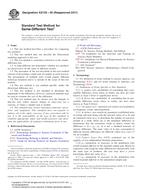
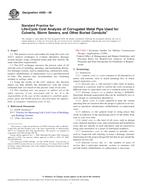 ASTM A930-09
ASTM A930-09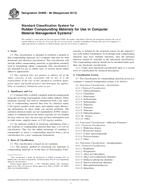 ASTM D5899-98(2013)..
ASTM D5899-98(2013)..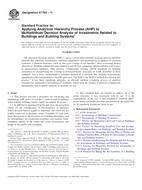 ASTM E1765-11
ASTM E1765-11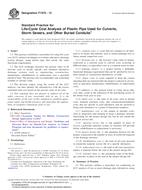 ASTM F1675-13
ASTM F1675-13
 Cookies
Cookies
